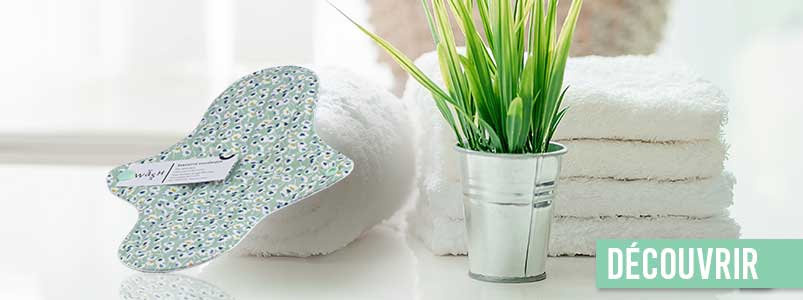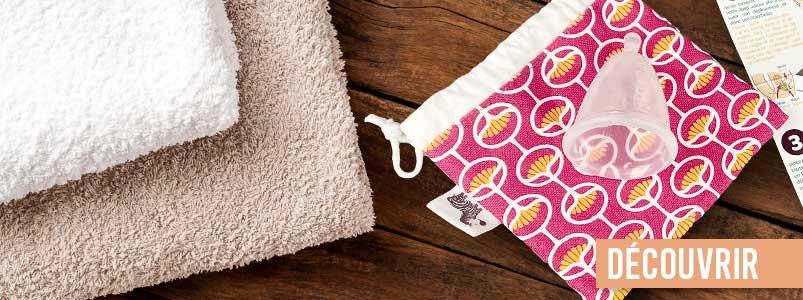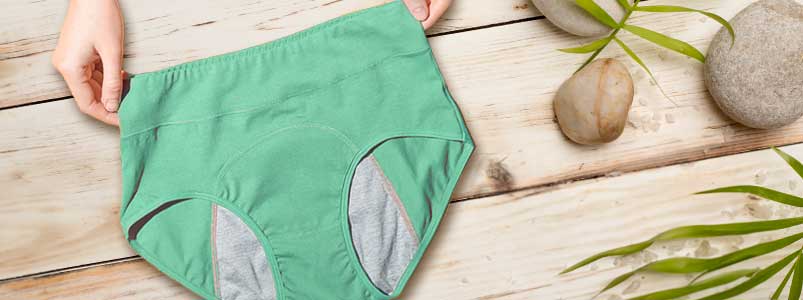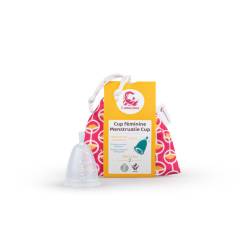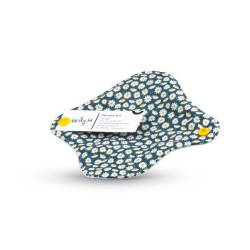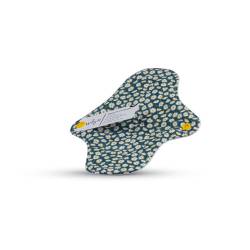Contents
The impact on health and the environment
Periodic pads and disposable tampons very often contain synthetic materials (plastics and synthetic polymers) but also chemicals such as dyes, perfumes or even bleaching agents. These different substances can cause irritation, allergies or infections in some women.
In addition, it generates large amounts of waste. According to ConsoGlobe , a woman uses between 10,000 and 15,000 menstrual products (pads, tampons, etc.) during her lifetime. Each year, more than 45 billion sanitary napkins are thrown away worldwide . You can imagine the amount of waste that can be avoided by buying washable protections!
A little history
Long before disposable sanitary pads were developed and marketed, women used all kinds of linens to absorb menstrual blood. They used pieces of reusable clothing made of cotton, wool or linen which they attached to their clothes with pins or belts. Archaeologists have even found sticks wrapped in linen or wool (ancestor of the tampon), used in ancient Egypt.
It was during the First World War that the protections became disposable and were produced in large quantities. In 1910, the American company Kimberly-Clark, specializing in the manufacture of paper, began to produce Cellucotton, a fiber more absorbent and less expensive than cotton, used to treat the wounded.
In 1920, the first "Kotex" disposable towel was marketed and was a huge commercial success. It becomes a revolutionary product: no need to wash your intimate protections. The tampon will make its appearance in the 1930s, popularized by Tampax.
Discussing menstruation in women and the use of menstrual protection has been a taboo subject for many years. The word "rule" is not pronounced on television until 1985 in an advertisement for the Tampax brand. And it will be necessary to wait until 2018 for a brand to use red blood (and no longer the color blue) in an advertisement for sanitary napkins.
Washable pads and panty liners
This is the protection that comes closest to what women did long ago. The washable sanitary napkin is the ecological alternative that will not upset your habits too much. But instead of using protections made of plastics and toxic products, you use a very soft protection made with 90% cotton and 10% polyester.
The towels that you will find on our site are made with ORGANIC cotton and GOTS certified ORGANIC polyester. In addition, the manufacturer has carried out absorbency tests and these tests have shown that they absorb up to 2 times more than disposable towels on a similar flow . In addition, they are equipped with pressure which allows them a good maintenance.
You will need 2 to 3 towels during the day, then you can put them in the washing machine with the rest of your laundry (no need to make a specific machine). If you want, you can use a washing pouch to wash them.
Discover our washable pads & panty liners
The menstrual cup
The menstrual cup, also called menstrual cup or menstrual cup, will rather replace the sanitary tampon, because it is inserted into the vagina. It comes in the form of a funnel with rounded edges and terminated by a small stem. It is made from medical silicone (used in surgery) which can therefore remain inside the human body. Menstrual cups are latex-free, phthalate-free, and bleach-free, making them much healthier for the body than tampons . In addition, they wash very easily when you take the shower for example.
If it is well positioned, you will not feel the cup at all and you will have total freedom of movement during your sports activities for example.
Menstrual cups have a lifespan of 10 years! This allows you to save a lot of money: a cup from you only costs 2€ per year!
We put you a summary in image of Lamazuna on the use of the cup and its many advantages.
Menstrual panties
Period panties are a newer alternative to the other two washable pads. With these panties, you no longer need to wear pads or cups, you only wear panties as usual. They are comfortable and discreet and offer reliable protection against leaks.
They can be worn for several hours and then washed by hand or in the washing machine. You don't create any more waste!
Access to periodic protection for all
Faced with the menstrual precariousness that affects many young women, Prime Minister Élisabeth Borne announced, during an interview on the program C à vous, the reimbursement by social security of reusable periodic protection for women aged 25. and less in the 2024 budget. In addition, the Government will help local authorities and establishments to install sanitary protection dispensers.
Some mutuals already reimburse these periodic protections , your health contract must bear the mention "reimbursement of periodic protections". Ask your adviser.
Local initiatives also exist to fight against this menstrual precariousness. It is a good idea to find out from your town hall or region to find out if a system for reimbursing periodic protection has been put in place.
How long can I keep my cup?
It is advisable to keep it between 6 to 8 hours maximum. But if you can empty it every 4 to 6 hours, it reduces the risk of bacterial infections. So you can sleep with a menstrual cup but if you are more of a late riser, prefer menstrual panties.
Which cup size to choose?
The smaller size is rather recommended for light flows or for young girls. The larger size will be suitable for heavy flows or women who have given birth vaginally.
Can I use a cup if I'm a virgin?
Yes of course. The menstrual cup does not pierce the hymen but rather prefers the smaller size. We advise you to relax well to put it on, and you can also help yourself with a water-based lubricant to facilitate insertion.
I wear an IUD, is it compatible with the cup?
Yes, this is not a problem, but some precautions should be taken:
- always leave space between the cervix and the cup.
- Be careful not to pull on the IUD strings when removing the cup.
- pinch the cup well to remove it to avoid the suction cup effect.
Linked products
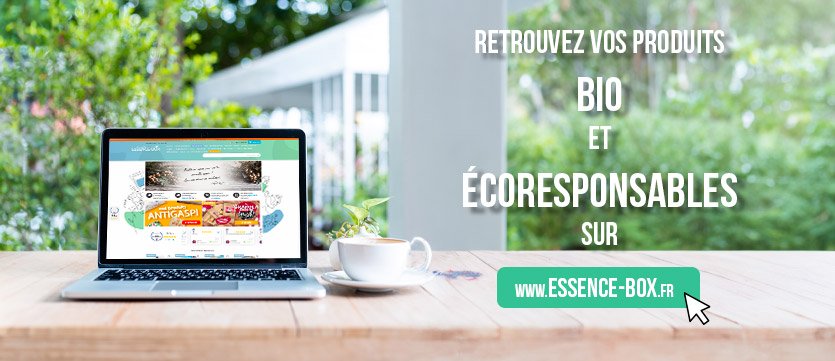




 By Cindy et Benoit
By Cindy et Benoit
